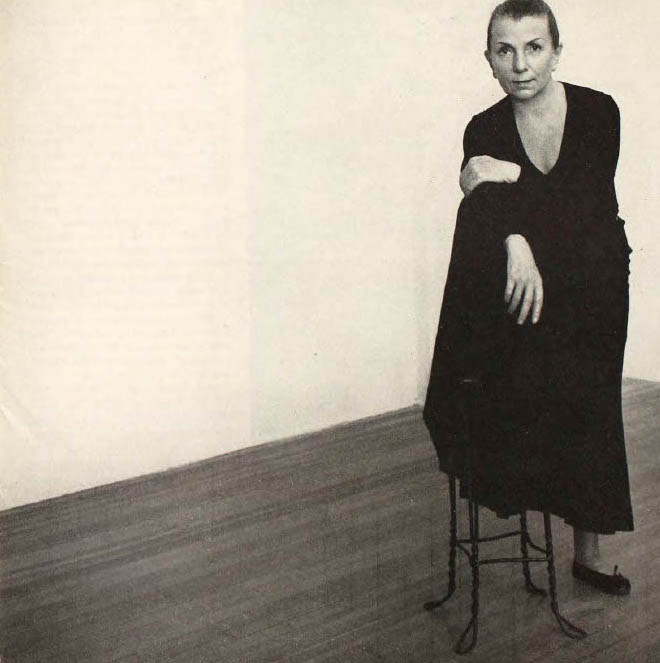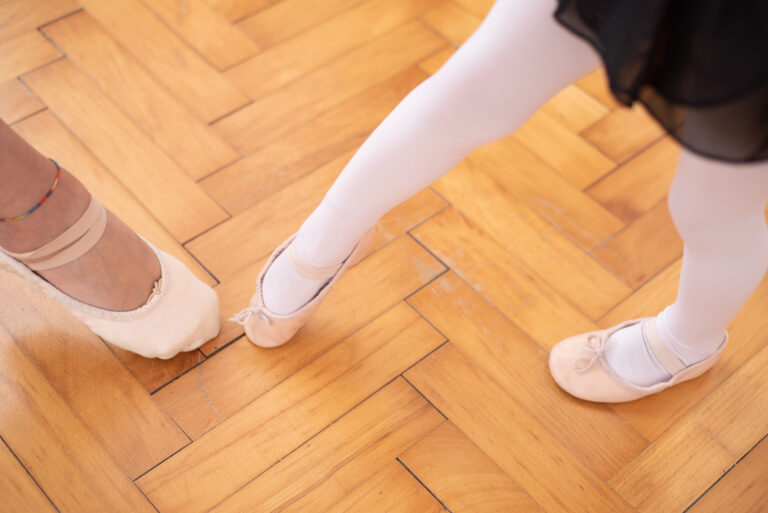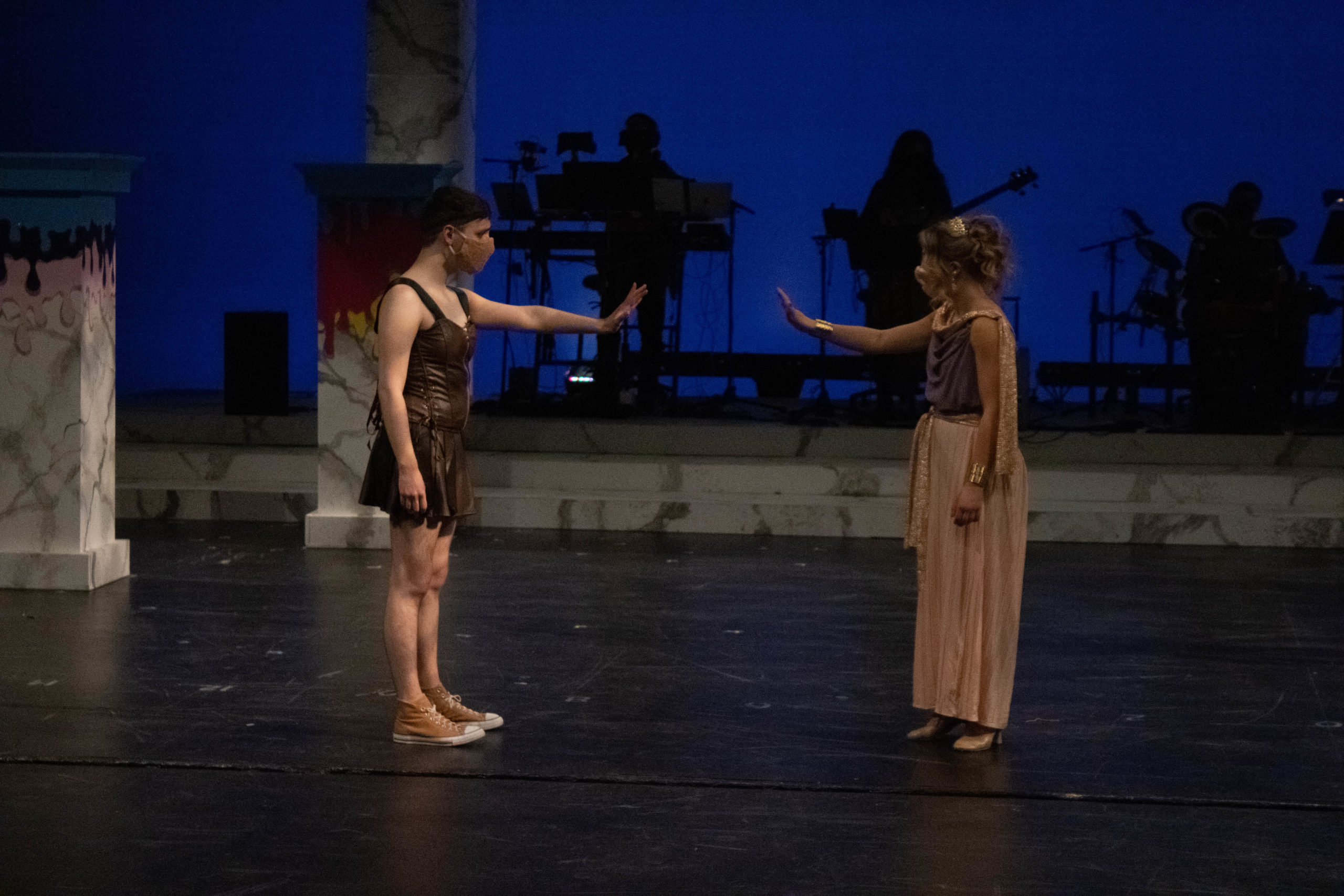
When Courtney Young first contemplated choreographing a production of Head Over Heels under COVID restrictions, she was…skeptical. “It seemed incredibly overwhelming to have the cast 10 feet apart, in masks and never touching,” says the veteran of eight Broadway shows and national tours, who’s now an assistant professor and coordinator in Ithaca College’s program for musical theater. “To be honest, I really wasn’t looking forward to it.”
Happily, Young found new choreographic solutions to go along with the new challenges posed by the coronavirus: “It has been a wild ride for sure, but in the end we have a product we can all be proud of,” she says now.
Dance Teacher asked Young—and fellow socially distant master Tucker Tab DeGregory, dance and theater instructor at Saint Andrew’s School in Boca Raton, FL—to share her secrets for closing the quality gap between conventional and COVID-adapted choreography.
Play by the Rules
DeGregory advises familiarizing yourself with your organization’s health and safety guidelines as early as possible. “We always start our planning erring on the side of caution,” he says, adding that what exactly is permitted for performances at Saint Andrew’s has changed every few months. In this “year full of pivoting,” you don’t want to be caught off-guard by tightened precautions.

Prepare (and Prepare)
Like many choreographers, Young typically goes to rehearsal with some phrases already assembled, but she also leaves space for serendipity and collaboration with the artists in the room. Under pandemic restrictions, “there’s less time for magic in the rehearsal room,” she says, but that collaboration is still important.
Slow and Steady
Experienced choreographers have an instinctive sense of how long it’ll take to set a number. If you haven’t already, adjust those expectations, says DeGregory: “If you think you definitely can choreograph that ensemble piece in an hour and a half, double the time.” Allow a time buffer to both account for protocols and to clean choreography across space, without physical contact or proximity to help define and specify. “Have patience with yourself and your students,” DeGregory adds.
Depth and Breadth
When we picture social distancing, it’s typically from side to side, in a horizontal plane. But Young discovered that the full depth of a backlit stage could effectively make it appear that dancers were physically close. “It was really fun making the audience believe they were actually touching,” she says. DeGregory says he’s incorporating more slowly rotating circles and switching lines than he might have pre-pandemic, shapes that Young has also found useful. DeGregory also notes that having individual dancers face different directions makes many distanced formations more compelling.
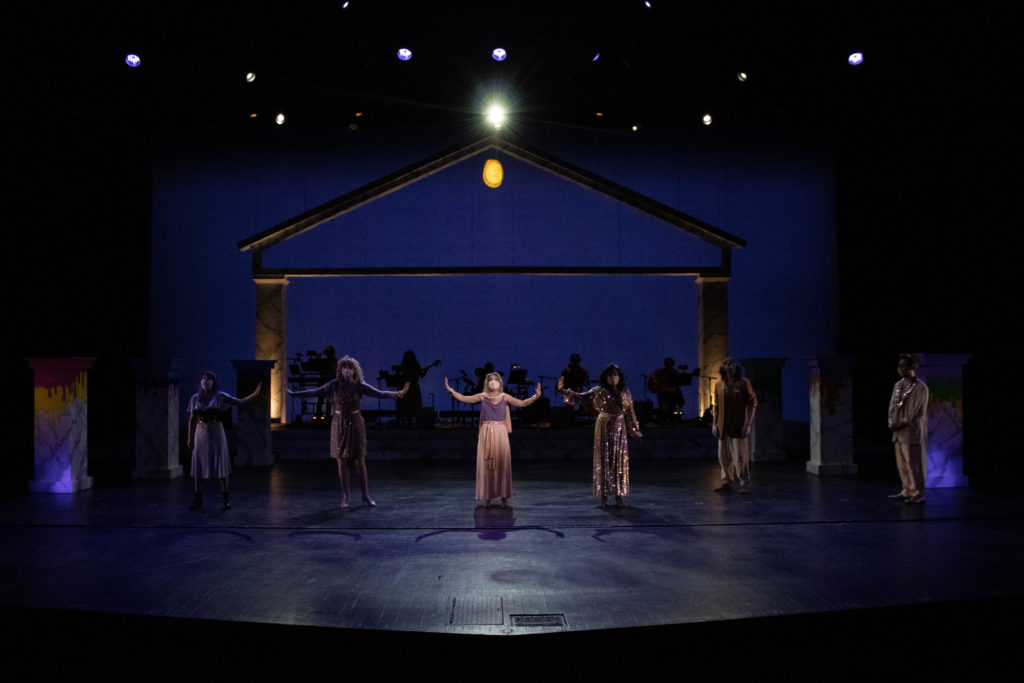
Solos in the Spotlight
It’s safe to say that the pandemic era won’t be remembered for its lavish production numbers. That’s fine with Young, who says she’s focused more on giving individual dancers their moments to shine: “I was able to utilize a lot of passes across the stage, like ‘This is my eight-counts to fly through the air.’ ” These additional chances to perform solos and small-group numbers have the added bonus of boosting self-confidence in dancers who usually aren’t center stage.
A Touch Different
While choreographing the emotionally charged duets for Saint Andrew’s production of Little Women, DeGregory realized that performers prevented from touching each other could touch physical objects instead—with much the same effect. “Just witnessing Meg’s hands curling on the arm of the couch and the energy going through her shoulders, we were able to see the desire and tension we would have gotten from an actual embrace,” DeGregory says. He adds that a set piece or a prop can also be used to maintain safe distance, as in two performers perched on opposite ends of a long couch.
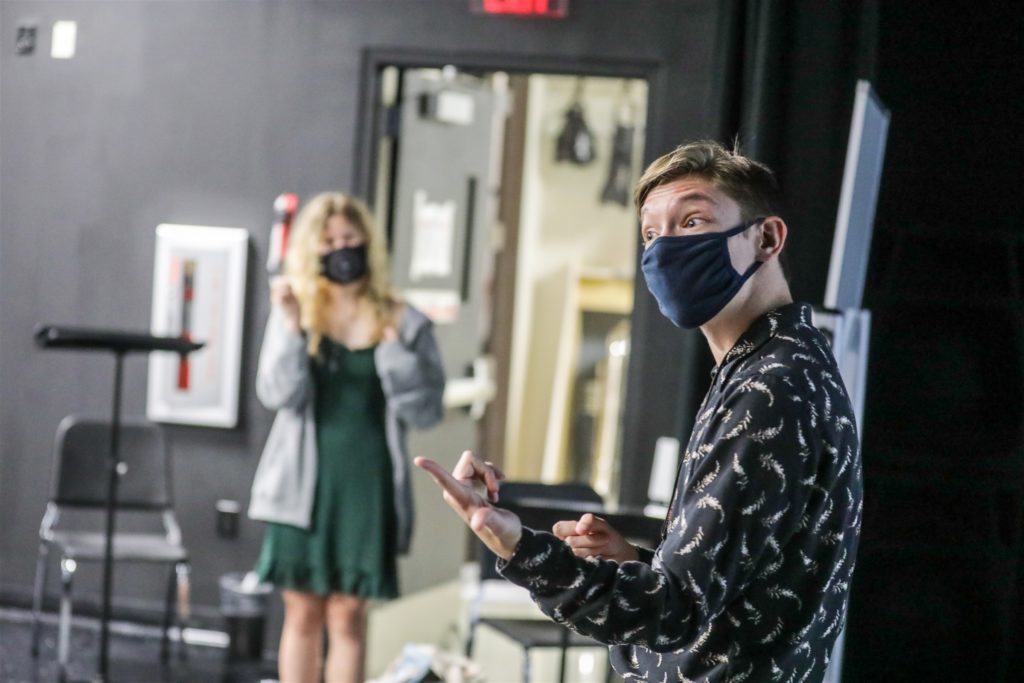
A Strong Connection
Young has found that partnering is still possible during the pandemic, with a little imagination. “The couples’ arms reached up towards each other from more than an arm’s length away, and it still read as partnering,” she says. (This is true of ballroom dance, as well, according to DeGregory.) So don’t be afraid to pair up socially distanced dancers! As long as each partner’s movement indicates high levels of energy sent back and forth, the audience’s imagination will kick in and perceive the choreography as partnering.
What Might Have Been
If possible, both Young and DeGregory recommend envisioning distanced choreography from scratch, rather than updating ideas that predated COVID. That’s even down to the choice of song or production, since, DeGregory notes, certain music may be easier to create physically distanced choreography to: He has found that up-tempo songs work better than ballads, and lyrics centered on intimacy or connection can pose challenges when performers are six feet apart.
Would Young be making different choreographic choices were it not for the coronavirus? Absolutely, she says. But, of course, being forced to adapt has led her to new possibilities she can use in future productions: “Not all movement has to be big and move across the space; things can be small and subtle. The challenges are real, but the process and the product are still satisfying.”



